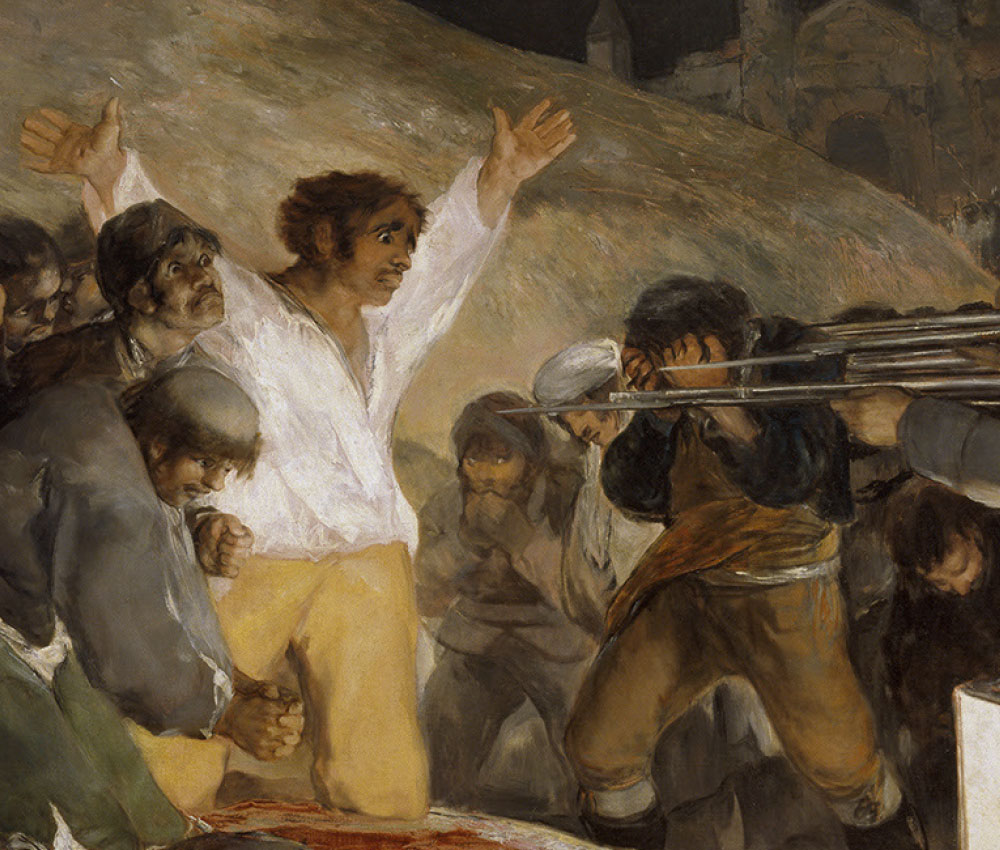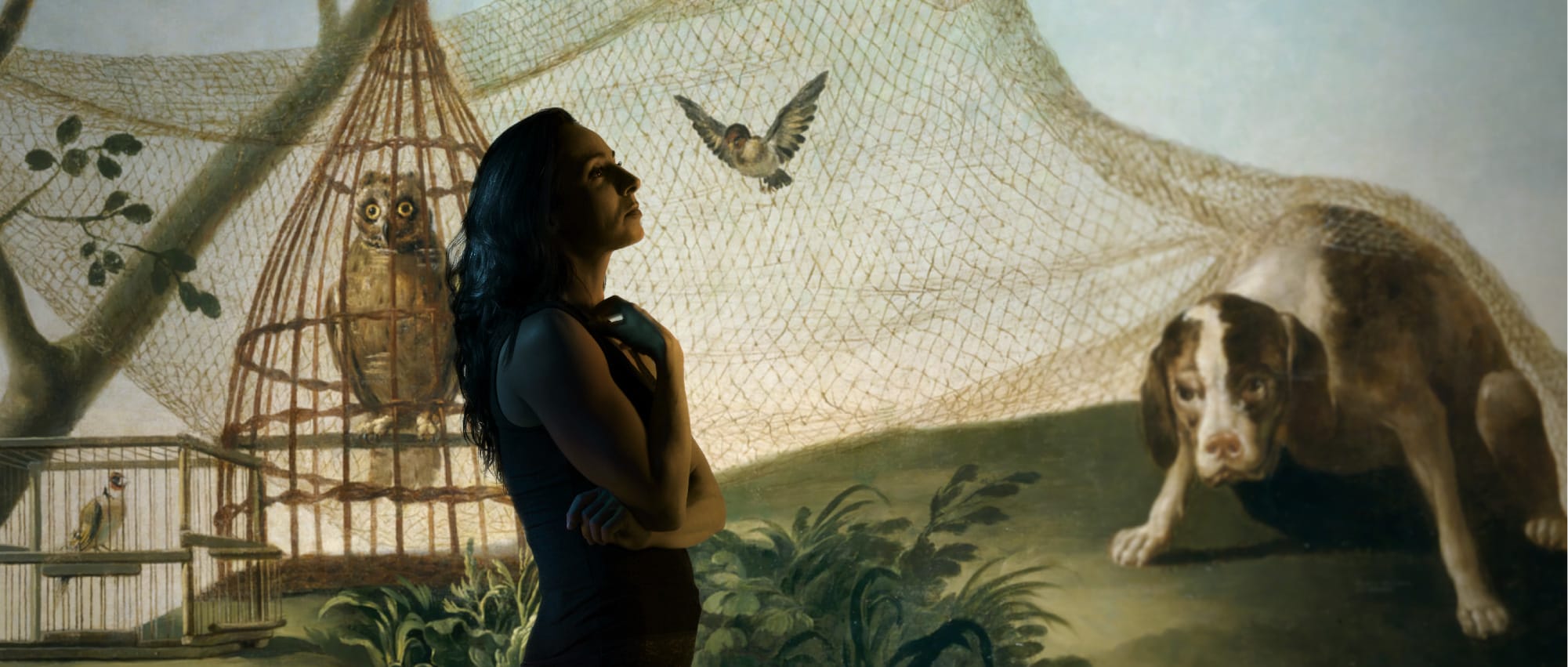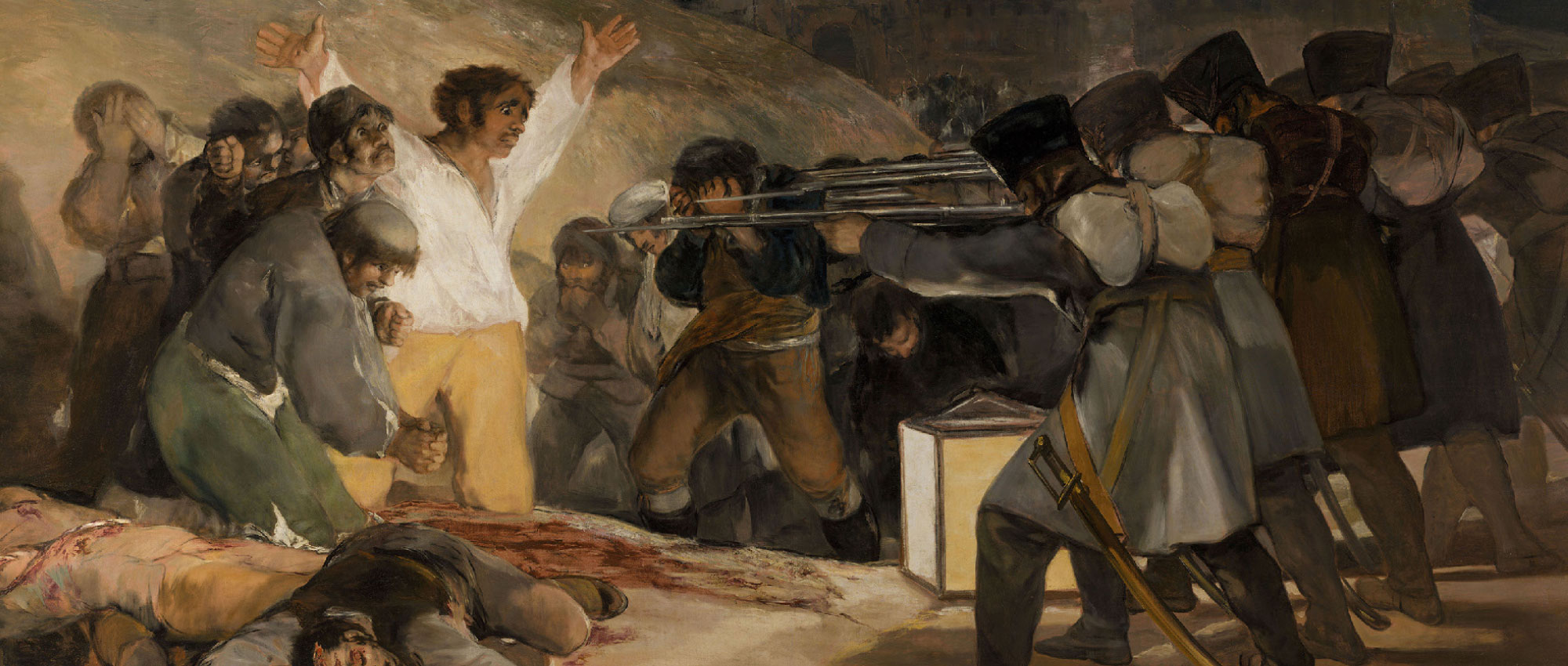
The 3rd of May 1808 in Madrid, or ‘The Executions’
The canvas called either The 3rd of May in Madrid or The Executions forms a pair with that called The 2nd of May 1808 in Madrid or The Charge of the Mamelukes. Both, nearly two metres tall by three and half metres wide, are housed in the Prado Museum.
They both depict the events that took place in 1808 that gave rise to the War of Independence between Spanish and French, although they were painted six years later, in 1814, after the end of the conflict and marking the return of Fernando VII to the throne. The paintings, possibly commissioned by the Regency Council, would have formed part of the acts of commemoration planned for that time.
When Goya began them, he was still working on the series of engravings titled Disasters of War, which with these paintings are directly related. As in the engravings, the artist centers on the brutality of both sides, without supporting one or the other, highlighting above all the injustice of war and its consequences for civilians. They also show compositional similarities, as various engravings feature platoons of soldiers seen from the back, placed in parallel lines shooting rifles towards a group of people on the left, or others in which the victims are gathered on the ground in a similar way.
With this interpretation, Goya distanced himself from other representations that contemporary artists were making of the conflict, in which they opted for a patriotic perspective that focused above all on the heroism of the Spanish side.
Since the 19th century, this type of work fed the idea that Goya acted as a modern graphic reporter who contemplated events first-hand and reflected them directly in his works. However, as in all his work, both the Disasters of War and these two canvases are the fruit of conceptualization by artist. They are based on real events, but they are subjected to the complex inventiveness of the painter, in which artistic tradition weighs heavily. In fact, a possibility has been suggested that Goya took inspiration for the scene of The Executions from the 1813 etching The Assassination of Five Monks by Miguel Gamborino.
Both paintings of the 2nd and 3rd of May complement one another; depicting two scenes that are related, as if they were a diptych. The Charge of the Mamelukes shows the violent attack by the people of Madrid on the French troops, led by Murat, from France, and which included the brave Mamelukes of the Imperial Guard.
On the contrary, the canvas of The Executions reflects the consequences of said uprising, suppressed by the execution of those who took part in it.
The whole composition is designed to highlight the tragedy of the event. It takes place in the outskirts of the city, in a place that has not been able to be identified clearly, and that in different studies is thought to be in one spot or another, although the most likely possibility is that Goya places it at the exit of the Puerta de la Vega, at the end of the Mayor street.
It takes place on a dark night, a tactic by which Goya gives more drama with the contrast created in the main scene, lit with a large streetlight. Close-up, nearest the viewer, are the bloody bodies of those who have just been shot, painted with a sketchy technique so as not to draw attention away from the central group, where we find those who are about to be executed, while in the background, also in a more summary technique, one can make out those who will soon meet the same fate.
The execution squad, made by line grenadiers and naval guards wearing battle uniforms with grey cloaks, form a compact and impenetrable group that confronts the group of prisoners, among which there is even a friar, and which is characterized for its variety of attitudes, for the different ways to face an end that is imminent and unavoidable, as the mound behind them reminds us that there is no possibility of escape.
As is typical of the artist, his capacity to show the feelings of the different characters is masterful, in which he clearly depicts fear, desperation, mercy or rage.
Goya highlights one figure among the victims, who appears kneeling with his arms raised, and who, because of his white shirt and yellow trousers, some authors have identified as the man who is represented in the foreground of the painting of the 2nd of May, attacking the saddle of a French soldier. In this way, Goya would show the succession of the different events.
The low valuation of these paintings upon their arrival in the Prado Museum in 1834, only 8.000 reales each, compared with the 80.000 that the portrait of The Family of Carlos IV was appraised for, could show that Goya’s way of representing the events was not very well-liked. However, its posterior influence on artists like Manet or Picasso, that practically reproduced the composition of this painting in their own creations, is an example of its true significance.


